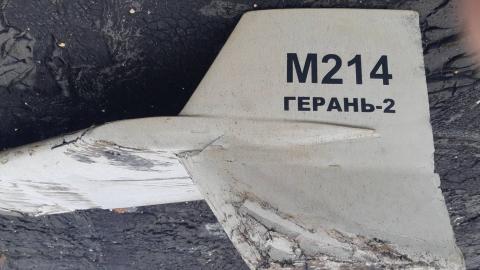Iran’s drone manufacturing enterprise has been long in the making. It started more than three decades ago during the war with Iraq in the '80s. When the longest conventional conflict of the 20th century ended in 1988, Iran didn’t abandon its drone program.
After decades of steady development, Iranian drones are now battle-tested, relatively sophisticated, affordable, and conducive for mass production. Some even claim that Iran is emerging as a drone superpower and its drones are becoming a "game changer" in conflict zones.
Today, Iranian drones wreak havoc in the Middle East. Iran and its terror proxies use drones in Iraq, Syria, Israel, Yemen, Saudi Arabia, and the UAE to advance Iran’s expansionist foreign policy objectives.
Nor is the Iranian drone threat limited to the region. Iran-made drones pose a threat to Europe’s peace and stability, and Ukraine is a prime example of how Iranian drones can terrorize European citizens. The Iranian-made drones are gaining further significance for Russia’s war machine. They reinforce Russia’s position in Ukraine, as Russia’s weapons arsenal is depleted by the continuation of the war. Tehran is working on its plans to build a drone manufacturing facility in Russia to make at least 6,000 drones.
In addition, Iran’s drones and missiles pose a direct threat to U.S. air supremacy in the Arabian Gulf and the Middle East region. In an April 2021 testimony before the Senate Armed Services Committee, U.S. Central Command chief Gen. Kenneth McKenzie Jr. noted that the small and medium armed drones being proliferated by Iran and its proxies “present a new and complex threat to our forces and those of our partners and allies. For the first time since the Korean War, we are operating without complete air superiority.”
A senior Iranian Intelligence Ministry official claimed, in early February, that China is in the "queue" among 90 countries to receive 15,000 Iran-made drones, a claim that has not been confirmed by Beijing. There is no doubt that the global market for Iran’s drone industry is expanding, but as one of the world's leading exporters of armed drones — that, among other countries, sells its UAVs to Saudi Arabia, the UAE, Myanmar, Iraq, Ethiopia, and even Iran — China does not need Iran’s inferior drones.
China has, in recent years, started flooding the Middle East with UAVs and, ironically enough, Beijing has exploited tensions between Saudi Arabia and Iran to supply both countries with its UAVs. China even struck a deal with Saudi Arabia in March of last year to build a drone factory in the Arab state.
In absence of a robust and credible deterrent, the Iranian regime is expected to further develop and proliferate its armed UAV technologies. But Washington can take a few simple steps to contain Iran’s drone program. First, do not help Iran by letting it gain control of U.S. drones. According to the 2019 U.S. Defense Intelligence Agency report, Iran has reverse-engineered many of its drone systems based on captured Western UAVs. When, in 2011, a malfunction led to a U.S. drone, RQ-170, landing in an Iranian desert, President Barack Obama reportedly decided not to take the risk of blowing it up before it fell into the hands of Iranian engineers intact. Within days, the Iranians paraded the drone through the streets of Tehran before starting their reverse-engineering mission. U.S. intelligence officials later concluded that the captured aircraft likely proved a bonanza for Iranian drone designers, who could reverse-engineer the craft. Cognizant of Iran’s reverse-engineering capability, Russia is even now sending some U.S.-provided weapons captured in Ukraine to Iran.
Second, the U.S. must stop selling drone parts to Iran. Despite years of sanctions against Iran’s defense sector, Iranian drones are still built largely with American and Western parts. Whether they are dual-use or have strict military use, the U.S. needs to prevent them from falling into Iran’s hands. Washington must aggressively sanction any Iranian entities and individuals involved in the drone program.
Third, the U.S. needs to give Ukraine training and weapons. America can exhaust Russia and defuse the Iranian-made drones in Ukraine by providing the Ukrainian forces with new weapons, advanced drones, fighter jets, and training to improve Ukraine's chances of shooting down Iranian-made drones and targeting Russian sites where those drones are being prepared for launch.















